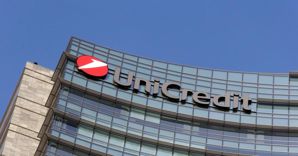“The EBA stress test shows that the benefits in the resistance of the capital strengthening performed to date are reflected in the European banking sector at a severe shock.” This is the comment of the European Banking Authority Chairman Andrea Enria. “The test is a vital tool to help supervisors to expedite the repair process of bank balance sheets, which is very important to restore credit to households and business.” The test, the EBA emphasized, “an exercise that promotes or bowl. Although we recognize the wide collection of capital as it is not a clean bill of health. Remains work to be done, that supervisors will launch as part of the review process and monitoring evaluation is not an exercise in which we measure those who passed and those who failed. “
The impact of the adverse economic scenario in 2018 would lead to a 380 basis point decline in the Cet 1 of 51 European banks subject to the EBA stress test, bringing its level to 9.4% at the end of that year . If one takes into account the regulatory measures on capital that have yet to get a force shortly loss would be 340 basis points.
The impact on CET1 would be driven mainly by the credit risk losses that would be of 349 billion: it comes to impaired loans and the reversal of the impairment of financial assets not measured at ‘fair value’ through profit or losses. The ratio of aggregate leverage would drop from 5.2% to 4.2%.

Unicredit will evaluate with ECB measures to offset the capital impact adverse scenario
The only bank with a net loss which would bring the CET1 by 2018 in a negative position and ‘Monte dei Paschi di Siena. All the other 50 banks are above the 5.5% threshold indicated in its time as a minimum threshold to ensure such a situation under control.
Among the ten banks among the 51 put under the EBA stress they see decline more significantly the CET1 due to the impact of an adverse economic scenario, there are two Italian: Mps, who heads the list, and Unicredit fourth. Apart from Raiffeisen and Banco Popular Espanol who are in second and third place, after Unicredit there are Barclays (Cet 1 in 2018 to 7.30% from 11.42% in 2015), Allied Irish Bank (7.39% from 15,86%), Commerzbank (7.42% from 13.77%), The Governor and Company of ther Bank of Ireland (7,69% from 13,30%), Deutsche Bank (7.80% 13 , 19%), Societe Generale (8.03% to 11.42%).
(Il Sole 24 Ore Thomson Plus)
source: EBA
© All rights reserved
No comments:
Post a Comment